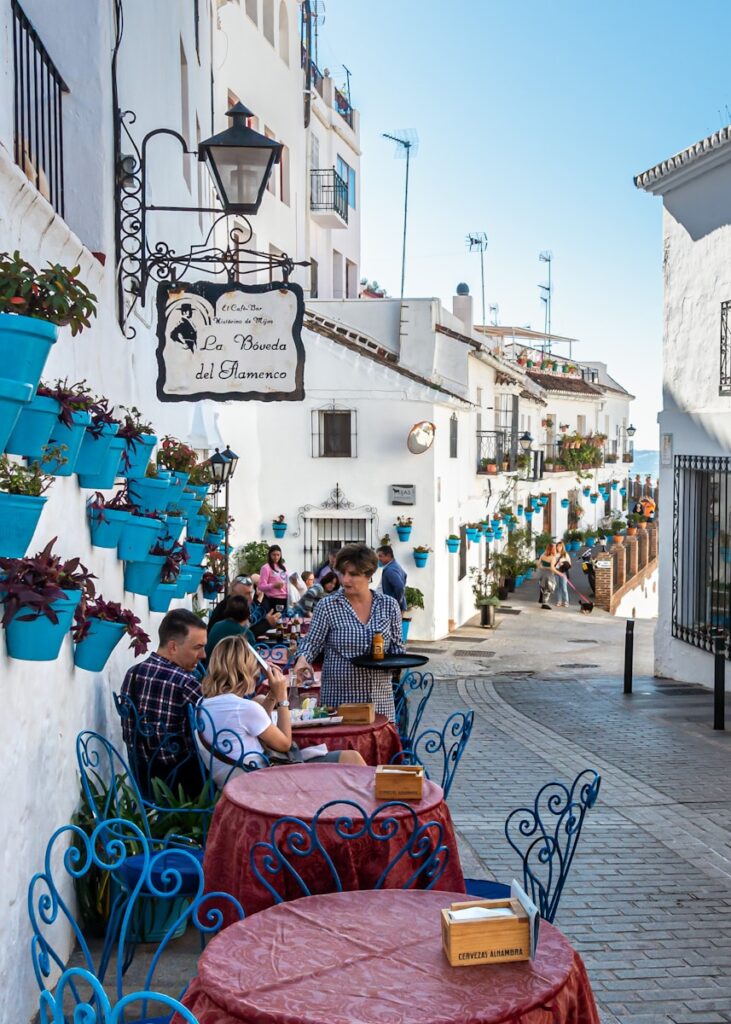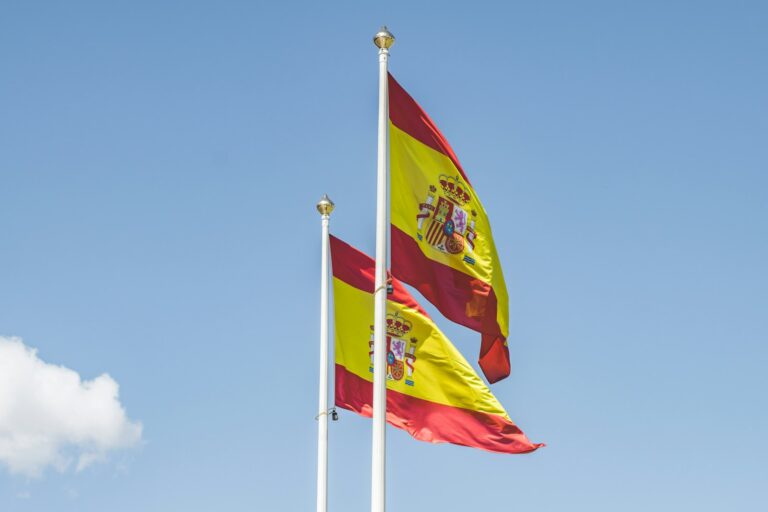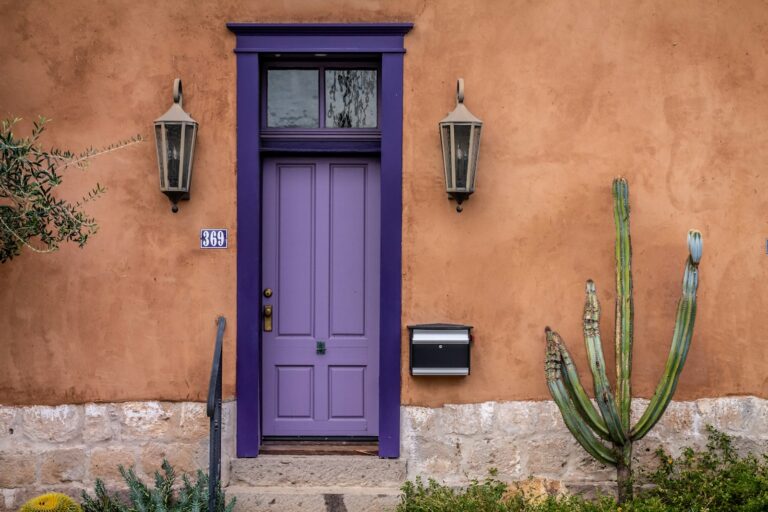What does ‘Qué Tal’ mean in Spanish? Usage and Tips Explained
Imagine you’re strolling through a bustling market in Madrid, the aroma of fresh churros wafting through the air, and you hear a friendly vendor call out, “¿Qué tal?” It’s one of those phrases that seems simple but carries a world of meaning. If you’ve ever wondered what exactly it means, you’re not alone.
In the whirlwind of learning Spanish, “¿Qué tal?” pops up everywhere—from casual conversations to friendly greetings. It’s like the Swiss Army knife of phrases, versatile and handy in so many situations. But what does it really mean, and how can you use it to sound like a local?
Stick around, and you’ll uncover the nuances behind this common Spanish expression. Whether you’re planning a trip to a Spanish-speaking country or just want to impress your friends, understanding “¿Qué tal?” will add a dash of authenticity to your conversations.
The Literal Translation and Meaning of “Que Tal”
When you jump into Spanish, you’ll come across the expression “¿Qué tal?” almost immediately. It’s one of those versatile phrases that packs a punch, effortlessly blending into various conversations. But, what does it really mean?
Word-by-Word Breakdown
To get a grip on “¿Qué tal?”, let’s break it down into its components:
“Que” – What
Que means “what.” It’s a simple query that forms the basis of countless questions in Spanish.
“Tal” – Such
Tal translates to “such.” While it’s a bit more abstract, it essentially shapes the context around whatever you’re referring to.
Combined Meaning in English
When you combine “¿Qué” and “tal?”, the literal translation is “what such.” That sounds odd, right? The magic of languages is how they adapt and transform. In everyday Spanish, “¿Qué tal?” idiomatically translates to “How are you?” or “How’s it going?” It’s a casual, friendly way to check in on someone, much like saying “What’s up?” in English.
Contextual Interpretations
“¿Qué tal?” isn’t confined to one scenario. Its beauty lies in the seamless fit across different contexts:
- As a Greeting: Imagine bumping into a friend on the street. You can warmly say, “¿Qué tal?”, just as you might say “Hey, how’s it going?” in English.
- To Ask About Well-being: It’s Monday morning, and you want to know how your colleague’s weekend was. “¿Qué tal?” serves perfectly here, asking about their health, mood, or overall well-being.
Examples Table
To give you a clearer picture, here’s a table with examples:
Context | Spanish Phrase | English Translation |
|---|---|---|
Greeting a friend | ¿Qué tal, amigo? | What’s up, friend? |
Checking on someone’s mood | ¿Qué tal estás? | How are you? |
Asking about an event | ¿Qué tal la fiesta? | How was the party? |
By using “¿Qué tal?” in these situations, you not only engage in meaningful conversations but also sound more like a local. The phrase’s flexibility makes it a gem in informal Spanish exchanges.
Common Usage and Situations for “Que Tal”
Wondering how to sprinkle some Spanish flair into your daily greetings? The phrase “¿Qué tal?” is your go-to. This little expression is like a Swiss Army knife in the area of casual Spanish chit-chat, perfect for a variety of scenarios.
Informal Greetings
“¿Qué tal?” isn’t just a dry “Hello.” It’s a versatile, informal greeting that adds a personal touch. When you bump into a friend, a cheery “¿Qué tal?” shows that you care about their well-being without sounding too formal. Picture this: you’re at a cozy cafe, sipping coffee, and you run into your buddy. Instead of a plain “Hi,” you say “¿Qué tal?” Instantly, the atmosphere feels warmer, more genuine.
Asking About Someone’s Well-being
Sometimes you don’t just want to know how someone is doing; you want to show you care. “¿Qué tal?” does this beautifully. With a simple “¿Qué tal, cómo estás?” (How’s it going, how are you?), you’ve opened the door for them to share more about their health, mood, or even life updates. It’s more than just small talk; it’s a way to connect on a deeper level.
Starting Conversations in Different Settings
Feel like an icebreaker should be an Olympic sport? Don’t sweat it. “¿Qué tal?” works wonders in various settings, making you a conversation pro. Here’s how:
Social Gatherings
At a party or a casual get-together, you need a starter that isn’t awkward. “¿Qué tal?” fits the bill. Imagine approaching a group, and with a simple “Hola, ¿qué tal?” you’ve smoothly entered the conversation. You’d be amazed how this little phrase can dissolve any social tension effortlessly.
Professional Environments
Think “¿Qué tal?” is too informal for work? Think again. In professional settings, where the vibe is more relaxed, this phrase can still shine. During a team meeting or a networking event, starting with “¿Qué tal?” can make interactions feel less stiff. It balances friendliness with professionalism, creating an inviting atmosphere for real dialogue.
Context | Usage Example |
|---|---|
Informal Greetings | “¿Qué tal?” when meeting friends |
Asking Well-being | “¿Qué tal, cómo estás?” |
Social Gatherings | “Hola, ¿qué tal?” at parties |
Professional Environments | “¿Qué tal?” in meetings |
By making “¿Qué tal?” a staple in your Spanish vocabulary, you’re not just speaking the language; you’re truly connecting with people. Why settle for stiff or robotic icebreakers when you can be effortlessly charming?
“Que Tal” vs. Other Spanish Greetings
Ever wondered how to spice up your Spanish greetings? Mastering the right phrase can make your interactions more genuine and engaging. Let’s break down how ¿Qué tal? stacks up against other common Spanish greetings.
Comparison with “Hola”
Hola—the go-to greeting for Spanish speakers. It’s like saying “hello” in English. You can use it anywhere, with anyone. Picture walking into a café or meeting someone for the first time—it covers all bases. But, if you want to dive a bit deeper, ¿Qué tal? adds a personal touch. Instead of just saying “hello,” you’re asking about someone’s well-being or their day.
Example:
- Hola—when you’re entering a room.
- ¿Qué tal?—when you’re grabbing coffee with a friend and asking, “What’s up?”
Differences from “Cómo Estás”
¿Cómo estás? is another heavy hitter in Spanish greetings. It’s more akin to asking “How are you?” and leans towards formality. You’d use it in professional settings or when meeting someone new. On the other hand, ¿Qué tal? is your go-to for casual chats with friends or family. It breaks the ice without the stiffness of formalities.
Examples:
- ¿Cómo estás?—speaking with your boss.
- ¿Qué tal?—talking to your close friend.
Formality Levels of Various Spanish Greetings
Understanding the formality levels can help you navigate different social scenarios in Spanish. Here’s a quick table to simplify this:
Greeting | Translation | Formality Level | Example Usage |
|---|---|---|---|
Hola | Hello | Neutral | Entering a store |
¿Qué tal? | What’s up? | Informal | Chatting with friends |
¿Cómo estás? | How are you? | Formal | Business meetings or first-time interactions |
¿Qué pasa? | What’s happening? | Informal | Casual gatherings and social events |
Buenos días | Good morning | Neutral/Formal | Morning greetings in professional environments |
Transitioning from formal to informal can enrich your conversations and help you connect better with native speakers. Knowing when to use each greeting demonstrates cultural awareness and respect. So next time you’re chatting in Spanish, consider weaving in ¿Qué tal? to keep things friendly and engaging.
Regional Variations and Cultural Nuances
Ever wondered how a simple phrase like ¿Qué tal? adapts to different regions and dialects? Let’s take a friendly tour across various Spanish-speaking countries to see how this greeting molds itself to local customs.

Usage in Spain
In Spain, ¿Qué tal? serves as a versatile greeting. It’s formal enough to show respect but casual enough to break the ice. Imagine walking into a cafe in Madrid; the barista might greet you with ¿Qué tal?. It’s not just about saying “Hey.” It’s about showing genuine interest in your well-being. Think of it as a friendly check-in rather than a mere formality.
Latin American Interpretations
¿Qué tal? resonates differently across Latin America. While the essence remains, regional twists give it a unique flair. Picture yourself in the Dominican Republic, where you’d hear ¿Qué lo que? instead. It has the same intent but offers a local flavor. Similarly, in Central America, ¿Qué onda? is the go-to expression. It’s casual, friendly, and perfect for everyday interactions. Each variant carries the warmth and authenticity of its region.
Influence of Local Dialects on Meaning and Pronunciation
Local dialects put their stamp on ¿Qué tal?, adding layers of cultural richness. In Mexico, for instance, ¿Qué onda? might be accompanied by distinct slang, making conversations more relatable and engaging. In Chile, ¿Cómo estai? (a relaxed version of ¿Cómo estás?) prevails. It’s a more intimate way to ask someone how they’re doing. These dialects don’t just modify words; they infuse them with regional identity and warmth.
Region | Common Greeting | Translation |
|---|---|---|
Spain | ¿Qué tal? | How are you? |
Dominican Republic | ¿Qué lo que? | What’s up? |
Central America | ¿Qué onda? | What’s up? |
Mexico | ¿Qué onda? | What’s up? |
Chile | ¿Cómo estai? | How are you? |
These variations aren’t just linguistic quirks. They’re windows into the local culture. Next time you hear one, you’ll understand the warmth and history behind it. How cool is that?
Tips for Using “Que Tal” Correctly
Learning a new language is fun, especially when you get familiar with common phrases like “¿Qué tal?”. This versatile phrase can help you connect with Spanish speakers more naturally. Let’s explore how you can use “¿Qué tal?” effectively.
Proper Pronunciation Guide
Pronunciation matters when connecting with native speakers. To say “¿Qué tal?” correctly:
- Qué – Say this like “keh“, with a short and sharp ‘e’ sound.
- Tal – Pronounce it like “tahl“, with a soft ‘a’.
Together, “¿Qué tal?” sounds like “keh tahl“.
Use It in Informal Settings
Think about catching up with friends or family. Use “¿Qué tal?” in these situations to keep things casual. Remember, it’s informal, similar to saying “what’s up?” in English.
Respond with a Brief Answer
When someone asks you “¿Qué tal?”, they expect a simple and quick response. Here are common answers:
- Bien (good)
- Mal (bad)
- Regular (so-so)
For example, if you’re having a decent day, saying “Regular, gracias” (so-so, thanks) suffices.
Use It as a Greeting
Keep it simple when greeting someone. Starting a conversation with “¿Qué tal?” works like saying “Hi, how are you?” As a friendly opener, it sets a positive tone.
Appreciating Regional Nuances
Recognize that “¿Qué tal?” varies across regions in pronunciation and usage. In Spain, it might sound slightly different than in Mexico, but it’s understood everywhere. Respecting these cultural nuances shows your awareness and effort.
Using “¿Qué tal?” helps break the ice and makes your interactions smoother. Practice it with enthusiasm to bring a friendly vibe to your Spanish conversations.
Appropriate responses to “Que Tal”
When someone asks “Qué tal?“, it’s handy to have a few go-to responses. Whether you’re feeling great or having a rough day, there’s a phrase for every situation.
Common Responses – Feeling great
Spanish | English | Context |
|---|---|---|
Bien | Good | Simple and positive, indicating you’re doing fine. |
Muy bien | Very good | An enthusiastic reply when you’re feeling fantastic. |
Regular | So-so | Neutral, signaling things are just okay. |
Mal | Bad | A straightforward way to convey that things aren’t going well. |
Common Responses – Having a rough day
Spanish | English | Context |
|---|---|---|
No tan mal | Not so bad | Suggests things could be worse. |
Estoy cansado/a | I’m tired | Indicates you’re feeling worn out. |
Estoy ocupado/a | I’m busy | Tells them you’re currently tied up with tasks. |
Nada, ¿y tú? | Nothing, and you? | Redirects the question back to the other person, keeping the convo going. |
Consider scenarios where you might use these.
- Chatting with a colleague after a long workday? “Estoy cansado/a“ works.
- Running into a friend at the store? “Muy bien“ if you’re having a good day.
- Just finished a workout? Maybe “No tan mal“ a light-hearted way of saying it wasn’t too tough.
Next time you hear “Qué tal?“, you’ll know exactly what to say.
Common mistakes to avoid
Exploring the nuances of qué tal can be challenging, but avoiding some common pitfalls helps you use it appropriately.
Incorrect Pronunciation
Ensure clear pronunciation. Say qué as “keh” and tal as “tah,” placing slight emphasis on tal. Mispronouncing these phrases can lead to misunderstandings or make interactions feel awkward.
Using It in Formal Situations
Save qué tal for informal chats with friends, family, or acquaintances. In formal settings—think business meetings or interactions with people you don’t know well—consider using ¿Cómo está usted? instead. This phrase respects formality and social boundaries.
Responding with a Simple “Bien”
Though bien (good) is an acceptable response, it’s often better to elaborate a bit. Share a brief update about your life or ask about the other person’s situation. Examples include:
- Estoy ocupado/a con el trabajo. (I’m busy with work.)
- Todo va bien, gracias. ¿Y tú? (Everything’s good, thanks. And you?)
Using “Qué Tal” as a Greeting
While qué tal might feel like a casual “hello,” it functions more as “how’s it going?”. Stick to traditional greetings like hola (hello) or buenos días (good morning) to start your conversations on the right note.
Ignoring Cultural Nuances
Different Spanish-speaking countries use qué tal with varying frequencies and in different contexts. Pay attention to regional differences to ensure you’re using it appropriately. For example, in Spain, it’s quite common, but in Mexico, ¿cómo estás? might be more prevalent.
Mistake | Correct Usage | Example |
|---|---|---|
Incorrect Pronunciation | qué as “keh”; tal as “tah” | Helps avoid misunderstandings |
Using It in Formal Situations | Use ¿Cómo está usted? for formal interactions | Appropriate in business meetings |
Responding with a Simple “Bien” | Provide a brief update or ask about the other person | Estoy ocupado/a con el trabajo. |
Using “Qué Tal” as a Greeting | Use hola or buenos días as greetings |
Conclusion: Mastering “Que Tal” in Spanish Conversations
Understanding “¿Qué tal?” can really elevate your Spanish conversations. It’s not just about knowing the words but also about grasping the cultural context and nuances. By practicing its pronunciation and using it in the right settings, you’ll come across as more natural and respectful.

Remember to go beyond a simple “Bien” when responding. Sharing a bit more can make your interactions richer and more engaging. And don’t forget to consider regional differences; what works in one Spanish-speaking country might not in another.
With these insights, you’re well on your way to mastering “¿Qué tal?” and making your Spanish conversations more authentic and enjoyable. Happy chatting!
Frequently Asked Questions
What does “¿Qué tal?” mean in Spanish?
“¿Qué tal?” is a versatile Spanish greeting that translates to “how’s it going?” or “how are you?”. It is commonly used in informal settings to ask about someone’s well-being or current situation.
When should I use “¿Qué tal?” instead of “Hola” or “¿Cómo estás?”?
Use “¿Qué tal?” in informal settings when you want a casual greeting. “Hola” is a more general greeting suitable for any situation, while “¿Cómo estás?” is a bit more formal and typically expects a more detailed response.
How should I respond to “¿Qué tal?”?
Respond to “¿Qué tal?” with more than just “bien”. Offer a brief update about your day or situation, such as “Bien, trabajando” (Good, working) or “Bien, gracias. ¿Y tú?” (Good, thanks. And you?).
Can “¿Qué tal?” be used in formal situations?
No, “¿Qué tal?” is best reserved for informal interactions. For formal settings, use “¿Cómo está usted?” or other more respectful greetings.
Are there regional differences in the use of “¿Qué tal?”?
Yes, the usage and frequency of “¿Qué tal?” can vary across different Spanish-speaking countries. Being aware of regional preferences can help ensure appropriate and effective communication.
What are common mistakes to avoid when using “¿Qué tal?”?
Avoid mispronunciation and using “¿Qué tal?” in formal situations. Also, ensure your response is not too brief; offer a little more information to keep the conversation flowing.






